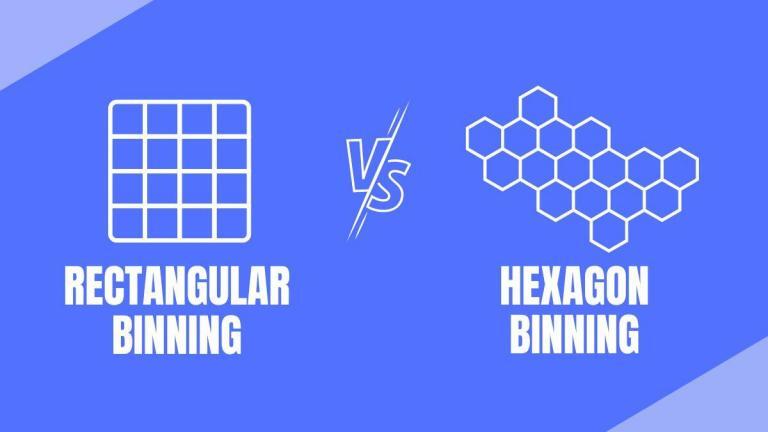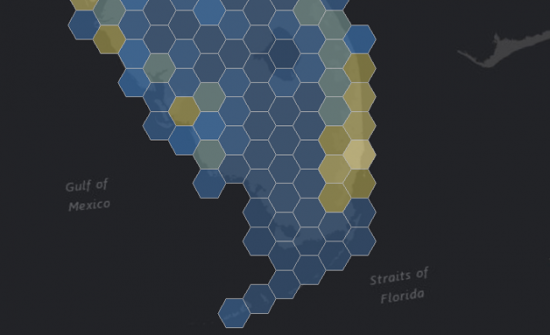What’s the Difference Between Hexagon Binning and Rectangular Binning?

Hexagon Binning vs Rectangular Binning
Hexagon binning and rectangular binning are two types of binning techniques in GIS. There are advantages and disadvantages to using them both.
In this article, we explain the differences between hexagon binning and rectangular binning. Finally, we also explain when to use each option.
Before we start, we’d like to show you all the most common binning options in GIS for your reference:

What is Hexagon Binning?
Hexagon binning is a process of dividing a dataset into evenly-sized hexagonal bins. We usually do this in order to analyze the data in each hexagon.
Specifically, we typically use hexagon binning to aggregate data. For example, we can summarize the population or any type of observation within each hexagon.
Although square grids are typically more common, hexagon binning has been gaining more traction over the years.

What is Rectangular Binning?
Rectangular binning is different from interpolation. Instead, it’s a data binning technique that divides a data set into rectangular blocks. Typically, each block is equal in size and square shape.
When you want to analyze data, each rectangular bin contains a certain number of data points. From there, you can aggregate the data and compare it amongst other grid cells to see if it has more or less.

Similar to hexagon binning, this is useful when you need to compare point data that fall into each rectangular bin. Rectangular binning is the most common binning technique in GIS and is a quick and easy way to summarize data points.
For example, you can see how we used rectangular binning for geographically weighted regression. You can see that we summarized the number of deer within each square. But we could have easily used hexagons instead.
Should You Use Hexagon or Rectangular Binning?
The three types of shapes that you can use for binning are rectangles, hexagons, and triangles. The reason why it’s only these three that can connect seamlessly (tessellate) with each other. Although rectangular binning is most common in GIS, hexagon binning can offer several advantages.
The main reason why hexagonal binning is more advantageous is because of how the edge effect in a hexagon reduces sampling bias. The optimal shape is a circle, which could reduce sampling bias even more. But the only problem with circles is that they don’t tessellate, while rectangles, hexagons, and triangles do.
To make data easier to analyze, use hexagonal binning when there is connectivity or when considering Earth’s curvature. If you want to learn more about this topic, hexagon grids also have benefits in ecology experiments and simulations.








